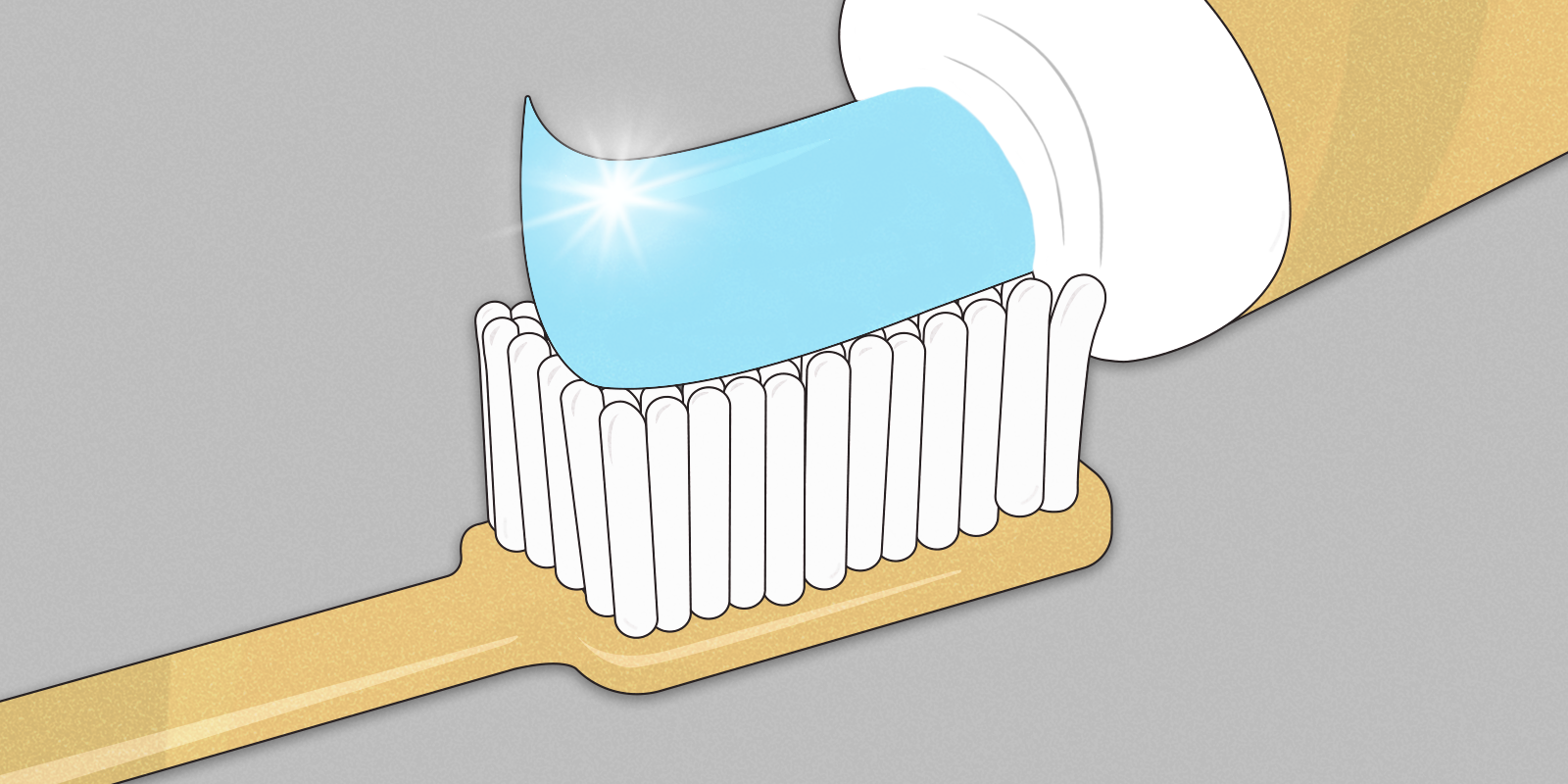What is fluoride?
Fluoride is a naturally occurring mineral. We find it in the water, rock, soil, but it’s not evenly distributed. Some parts of the world have higher naturally occurring concentrations – Colorado included. As a mineral, it has a lot of affinity towards water, so it will migrate from soil and rock into water. Because of that, fluoride can actually also be found in some plants, so our food sources will also have trace elements of fluoride.
And what is tooth enamel?
Enamel is basically a mineral construct mostly made of calcium phosphate. This matrix is essentially a framework of crystal structures that we call hydroxyapatite. Enamel is also the most mineralized part of the human body – more dense than bone. As a result, it's really strong. Which is important as we need something strong to chew food with. If our teeth were formed the way bone is, we wouldn’t be able to chew as well.
How does tooth enamel interact with fluoride?
In essence: Due to its mineral structures, fluoride enhances or increases or strengthens the enamel.
For more context, because of the mineral structure component of enamel within that hydroxyapatite crystal, that crystal structure will replace calcium with fluoride more readily. So in the presence of fluoride, calcium is exchanged with fluoride. Fluoride hydroxyapatite crystals are even stronger than calcium hydroxyapatite crystals.
Through normal wear and tear, like eating over a lifespan, depending upon what an individual's diet is, that outer protective enamel could wear down. Fluoride helps avoid that.
How does tooth decay enter the conversation?
Tooth decay is a different process. You need a few other items present, including bad bacteria and an acidic environment.
The presence of this bad bacteria, which often thrives in more acidic environments, produces more acidity through its own metabolic processes – such as when they are breaking down carbohydrates. And as a person’s pH level in their mouth goes down, that promotes leaching of the minerals within the structure of the enamel. We call that demineralization.
Why is demineralization important to understand?
When you have prolonged periods of demineralization, then that weakens the mineral matrix that creates opportunities for the bacteria to seep even further into the tooth, and that's when you begin having holes – what’s conventionally known as cavities. As enamel breaks down, and you have exposure to that next layer in the tooth that we call dentin, which is much softer, that creates a much quicker pathway opportunity for bacteria.
Is there a process of remineralization using fluoride to help the teeth?
Yes. So, demineralization is bad; remineralization is good. Over the many decades of fluoride research and research around dental caries, or tooth decay, we've learned a lot. We've learned that like everything within a healthy ecosystem, there's a balance. There's a balance between remineralization and demineralization.
We want people to spend more time in remineralization compared to demineralization. Remineralization is supported by healthy eating and a good diet, by tooth brushing – with fluoride in the toothpaste.
Fluoride has a very important benefit that goes beyond, just say, the absorption and strengthening of the enamel. Fluoride also creates an environment that bacteria don't like to be in. It interferes with bacteria metabolism and reduces bacteria's ability to reproduce, helping to lower the threshold of bad bacteria, otherwise known as pathogenic bacteria. So just the presence of fluoride alone provides a benefit in helping the control bacteria within the oral microbiome in our mouths.
It sounds like a balancing act to maintain good oral health within the context of demineralization and remineralization.
That’s right. There's a host of other factors to consider as well when discussing oral health, including:
- Social determinants and their influence on a person’s health
- Healthy behaviors and diet
- An individual’s oral microbiome. No oral microbiome is the same as we each have an unique ecology of microorganisms.
- And of course genetics. Not everyone can naturally produce strong enamel. The formation and hardness of crystalized structures varies in people. For some individuals, it can be severely dysfunctional and can lead to enamel hypoplasia – where they lack the ability to naturally produce a good enamel structure or even no enamel at all.
The most important thing is that, for the majority of people, as long as you favor remineralization you have a much greater likelihood of preventing tooth decay.
What happens on the other side of the equation when the teeth have too much fluoride exposure?
That's when we begin shifting into dental fluorosis – where the teeth are exposed to too much fluoride.
As more and more fluoride ions are taken into the crystallized structure of the enamel, the enamel becomes harder, but at some point the hardness reaches a place where the tooth appearance begins to change, which can often make the tooth look discolored.
We grade fluorosis at different levels. At the lower levels, the discoloration can be very minor and cosmetic, rarely noticeable. You’ll see a little bit more opaque white, striations or blotchy streaks in the tooth’s enamel. At higher levels, often when there’s been excessive ingestion of fluoride when teeth have been developing, the discoloration will shift from white opaque to more yellow to brown.
There’s a famous series of cases of this in Colorado Springs in the early 1900s where a dentist noticed the unusually high prevalence of brown-looking teeth among residents, which was called the ‘Colorado brown stain.’ Later, dental researchers would discover elevated levels of naturally occurring fluoride were the culprit.
At the most severe levels of dental fluorosis, there is some pitting that occurs in the teeth that changes the outer surface. These cases, more often than not, result from exposure to elevated levels of naturally occurring fluoride. However, this is very unusual. When we see dental fluorosis, it is in the very mild to mild range.
From a dental therapeutic perspective with the application of fluoride, it's the balance between maximizing the preventive opportunities that fluoride provides, including strengthening the enamel and minimizing the negative opportunities for dental fluorosis.
As someone in the dental field, do you see the effects of traditional toothpaste that contains fluoride and fluoride in the drinking water working well together?
Yes. I think that the thing that we have to always remember with regards to fluoride added to municipal water systems is the intent there is to be able to provide some fluoride exposure to those who normally would not be able to have access to fluoridated toothpaste. They may not have the economic means to purchase that on a regular basis or to see a dentist. It’s an important preventative tool that helps to improve health equity for underserved groups when it comes to fighting tooth decay. Adding fluoride to community water systems continues to yield cost-effective results for populations.
As a dentist, how do you navigate fluoride skepticism?
I think we’ve lost an understanding of what risk entails, especially thinking of living in a world where we expect zero risk. There will always be a very small number of people who will be susceptible to an adverse outcome of something that can greatly benefit, possibly up to 99% of the population. While we can never guarantee to every person that any therapeutic or preventive intervention is 100% free of any potential adverse outcome, we need to recognize that by not doing it, by taking away something like fluoride, the trade-off is taking away something that could benefit up to 99% of the population.
And for a final contextual reminder: Think of your parents’ and especially your grandparents' generation. Tooth loss was much more common and frequent. All my grandparents had to wear full dentures, and my dad had all his teeth taken out by the time he was 25.
Another thing, too, is that fluoride is a natural mineral, and we add other natural minerals in our water systems to benefit all of us. We use chlorine in municipal water at very low levels to improve the water, to make it drinkable. Iodine is a natural mineral we add to salt in order to prevent the development of thyroid problems. Having this context and some historical perspective, I think, is often missing from this conversation.
This interview was edited for length and clarity.





